-
 Bitcoin
Bitcoin $115200
-2.68% -
 Ethereum
Ethereum $3601
-5.16% -
 XRP
XRP $3.035
-2.96% -
 Tether USDt
Tether USDt $0.9997
-0.04% -
 BNB
BNB $764.5
-5.43% -
 Solana
Solana $168.1
-5.92% -
 USDC
USDC $0.9998
-0.02% -
 Dogecoin
Dogecoin $0.2090
-4.80% -
 TRON
TRON $0.3272
-0.49% -
 Cardano
Cardano $0.7306
-5.00% -
 Hyperliquid
Hyperliquid $39.16
-12.22% -
 Stellar
Stellar $0.3967
-4.96% -
 Sui
Sui $3.566
-5.95% -
 Chainlink
Chainlink $16.55
-6.57% -
 Bitcoin Cash
Bitcoin Cash $552.3
-3.90% -
 Hedera
Hedera $0.2516
-4.69% -
 Avalanche
Avalanche $21.99
-5.75% -
 Toncoin
Toncoin $3.621
-0.28% -
 Ethena USDe
Ethena USDe $1.000
-0.03% -
 UNUS SED LEO
UNUS SED LEO $8.951
0.02% -
 Litecoin
Litecoin $105.9
-3.59% -
 Shiba Inu
Shiba Inu $0.00001232
-5.00% -
 Polkadot
Polkadot $3.640
-5.55% -
 Uniswap
Uniswap $9.048
-7.03% -
 Monero
Monero $301.8
-1.51% -
 Dai
Dai $0.9999
-0.01% -
 Bitget Token
Bitget Token $4.334
-3.66% -
 Pepe
Pepe $0.00001064
-6.17% -
 Cronos
Cronos $0.1367
-5.78% -
 Aave
Aave $259.2
-4.59%
What is Chainlist.org and how to use it with MetaMask?
Chainlist.org is a trusted, community-driven platform that simplifies connecting to EVM-compatible blockchains like Binance Smart Chain and Polygon by offering verified network details and one-click MetaMask integration.
Jul 05, 2025 at 07:17 pm
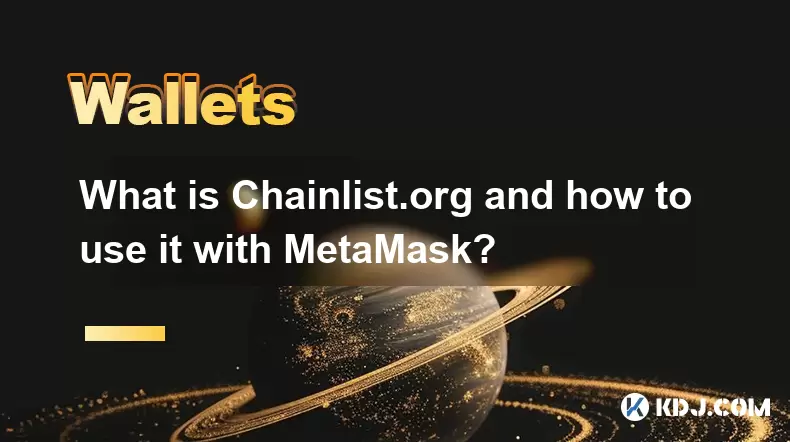
Understanding the Purpose of Chainlist.org
Chainlist.org is a community-driven platform that provides a comprehensive list of blockchain networks compatible with the Ethereum Virtual Machine (EVM). This service allows users to easily find and connect to various EVM-compatible chains, especially when using wallets like MetaMask. It serves as a centralized resource for network details such as RPC URLs, chain IDs, currency symbols, and block explorer links.
The site is particularly useful for developers, investors, and everyday users who interact with multiple blockchain ecosystems. Each listed network undergoes verification to ensure accuracy and reliability, helping prevent scams or misconfigurations when connecting decentralized applications (dApps) to different chains.
Why Chainlist.org Matters in the Crypto Space
As the number of EVM-compatible blockchains continues to grow, managing connections across these networks becomes increasingly complex. Chainlist.org simplifies this process by offering one-click integration options for MetaMask and other EVM-based wallets. This eliminates the need to manually input network parameters, which can be error-prone and time-consuming.
Security is another critical factor addressed by Chainlist.org. By maintaining a verified list of chains, it reduces the risk of connecting to malicious or fake RPC endpoints. This trust layer helps users confidently switch between networks like Binance Smart Chain, Polygon, Avalanche, and many others without compromising their wallet security.
How to Connect Chainlist.org with MetaMask: Step-by-Step Guide
To use Chainlist.org with MetaMask, follow these detailed steps:
- Open your browser and navigate to https://chainlist.org. Ensure you are using the official website to avoid phishing risks.
- Connect your MetaMask wallet by clicking on the "Connect Wallet" button located at the top right corner of the page.
- Select MetaMask from the available wallet options and confirm the connection request in your MetaMask extension.
- Browse or search for the desired blockchain network using the search bar or scroll through the list of available chains.
- Click the "Add to MetaMask" button next to the chosen network. A confirmation prompt will appear in your MetaMask extension.
- Approve the addition of the network by clicking "Approve" in the MetaMask window. The selected chain will now appear in your wallet's network dropdown menu.
Once added, you can seamlessly switch between chains directly from your MetaMask interface.
Common Issues When Using Chainlist.org with MetaMask
While the integration is generally smooth, some users may encounter issues during setup. One common problem is the failure to add a custom network due to incorrect RPC server responses. In such cases, verify the network status on the Chainlist.org page and ensure you're using the latest version of MetaMask.
Another frequent issue is confusion over network identifiers like chain ID and symbol. Always double-check the information displayed on Chainlist.org against the dApp or project documentation you're trying to interact with. Mismatched chain IDs can lead to transaction failures or loss of funds, so accuracy is crucial.
If you face an error message while adding a network, try removing any previously added versions of the same chain from MetaMask before attempting again. Clearing cached data in your browser can also resolve unexpected errors.
Alternative Ways to Use Chainlist.org Beyond MetaMask
Although Chainlist.org is primarily known for its MetaMask compatibility, it can also be used in other contexts. Developers can fetch JSON-RPC endpoint data from Chainlist.org to configure nodes or integrate into dApps. The site offers downloadable configuration files for each chain, including essential metadata required for web3 integrations.
Additionally, wallet providers and dApp developers often reference Chainlist.org to validate their own chain configurations, ensuring consistency across platforms. Some third-party tools and explorers pull data from Chainlist.org to offer dynamic chain switching features for end-users.
For advanced users, Chainlist.org supports API access, allowing programmatic retrieval of chain data. This can be particularly helpful when building multi-chain applications or deploying smart contracts across several EVM-compatible networks.
Frequently Asked Questions
Q1: Can I trust all the networks listed on Chainlist.org?
Yes, all networks listed on Chainlist.org go through a verification process to ensure they are legitimate and safe. However, always cross-reference network details with official project documentation before interacting with unknown chains.
Q2: Is Chainlist.org affiliated with MetaMask or ConsenSys?
No, Chainlist.org is an independent community-run initiative and is not officially affiliated with MetaMask or ConsenSys. It operates as a public good to support the broader Ethereum ecosystem.
Q3: What should I do if a network is missing from Chainlist.org?
You can submit a request to add a new chain via the Chainlist.org GitHub repository. The maintainers will review the submission and, if valid, include it in the list after verification.
Q4: Why does Chainlist.org sometimes show outdated network information?
Chainlist.org relies on community contributions and automated checks. If you notice outdated data, you can report it through the site’s feedback channels or contribute updates directly via their open-source repository.
Disclaimer:info@kdj.com
The information provided is not trading advice. kdj.com does not assume any responsibility for any investments made based on the information provided in this article. Cryptocurrencies are highly volatile and it is highly recommended that you invest with caution after thorough research!
If you believe that the content used on this website infringes your copyright, please contact us immediately (info@kdj.com) and we will delete it promptly.
- Cardano Price, Pi Network, and Crypto Presales: What's the Buzz?
- 2025-08-02 08:50:12
- XRP Fund Success: Teucrium CEO Reveals Trillions on the Horizon
- 2025-08-02 09:10:12
- Solana's Revenue Boom Amidst Weak Jobs Data: A New York Take
- 2025-08-02 09:31:52
- Challenge Coins: More Than Just Collectibles – A Military Tradition
- 2025-08-02 08:30:12
- Under the Radar: Hunting for 100x Crypto Gems in a Pi Network World
- 2025-08-02 08:30:12
- XRP, Hedera, and Crypto Picks: What's Hot in the Crypto Sphere?
- 2025-08-02 09:35:13
Related knowledge

What is a watch-only wallet in Trust Wallet?
Aug 02,2025 at 03:36am
Understanding the Concept of a Watch-Only WalletA watch-only wallet in Trust Wallet allows users to monitor a cryptocurrency address without having ac...
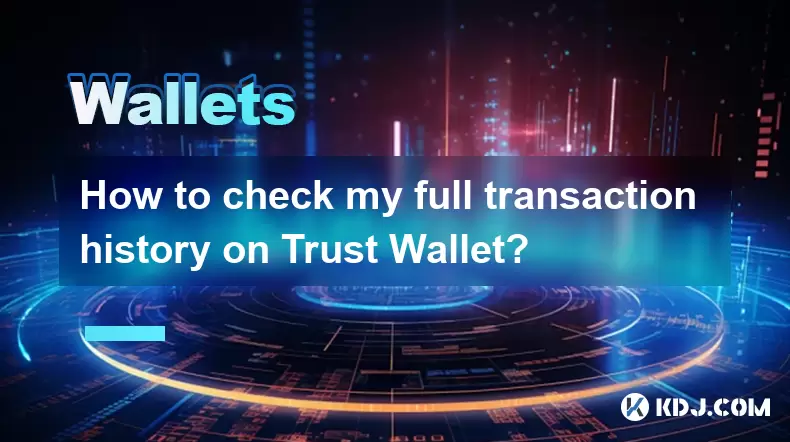
How to check my full transaction history on Trust Wallet?
Aug 02,2025 at 09:24am
Understanding Transaction History in Trust WalletTrust Wallet is a widely used non-custodial cryptocurrency wallet that supports a broad range of bloc...
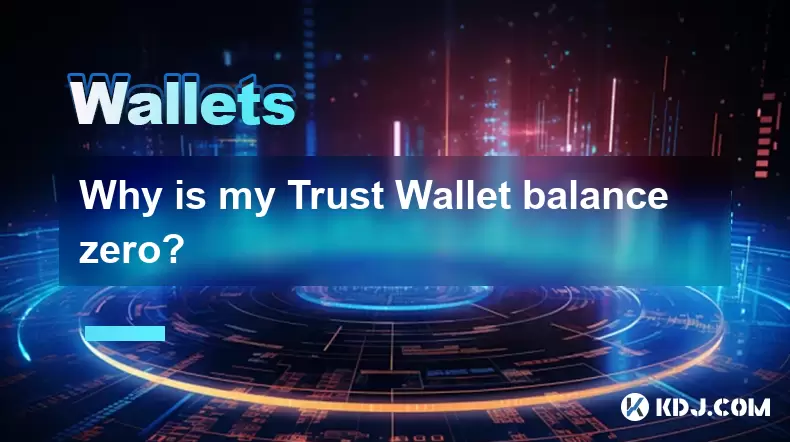
Why is my Trust Wallet balance zero?
Aug 02,2025 at 03:49am
Understanding Trust Wallet Balance Display IssuesIf you're seeing a zero balance in your Trust Wallet despite knowing you've previously received or se...
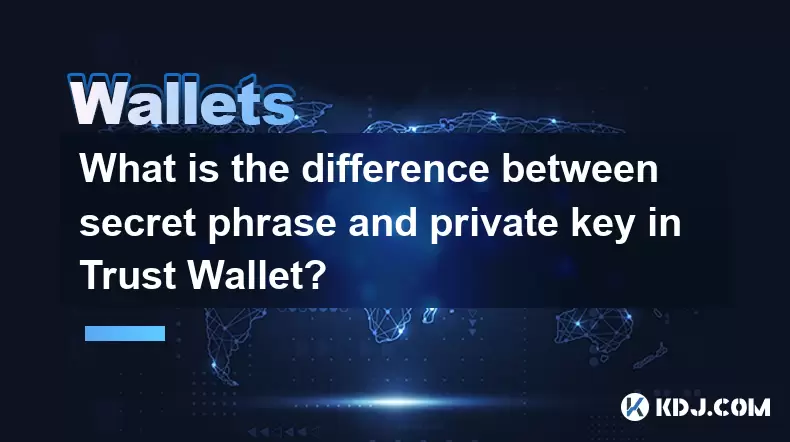
What is the difference between secret phrase and private key in Trust Wallet?
Aug 02,2025 at 09:49am
Understanding the Role of a Secret Phrase in Trust WalletThe secret phrase, also known as a recovery phrase or seed phrase, is a sequence of 12 or 24 ...
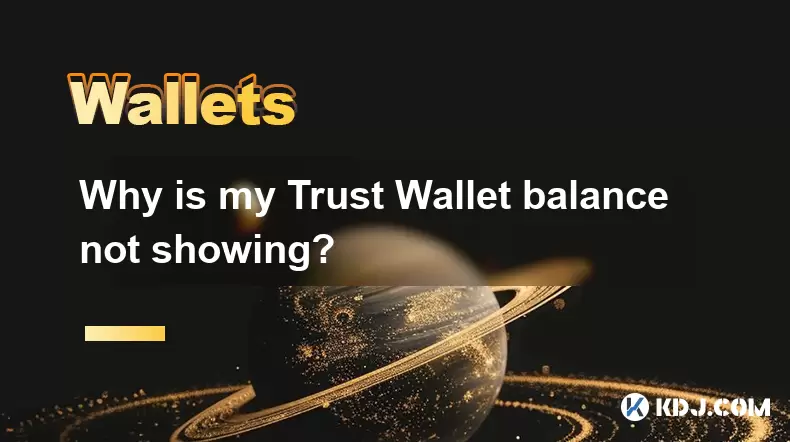
Why is my Trust Wallet balance not showing?
Aug 02,2025 at 06:01am
Understanding Trust Wallet Balance Display IssuesMany users encounter the issue where their Trust Wallet balance is not showing despite having previou...
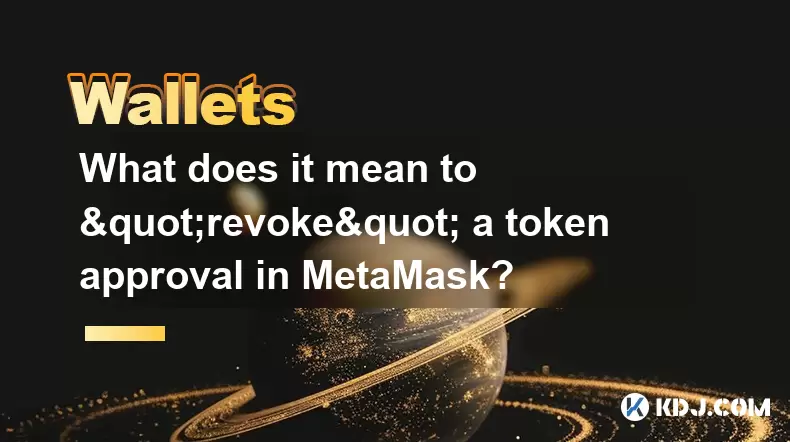
What does it mean to "revoke" a token approval in MetaMask?
Aug 02,2025 at 02:57am
Understanding Token Approvals in MetaMaskWhen interacting with decentralized applications (dApps) on Ethereum or EVM-compatible blockchains, users oft...

What is a watch-only wallet in Trust Wallet?
Aug 02,2025 at 03:36am
Understanding the Concept of a Watch-Only WalletA watch-only wallet in Trust Wallet allows users to monitor a cryptocurrency address without having ac...

How to check my full transaction history on Trust Wallet?
Aug 02,2025 at 09:24am
Understanding Transaction History in Trust WalletTrust Wallet is a widely used non-custodial cryptocurrency wallet that supports a broad range of bloc...

Why is my Trust Wallet balance zero?
Aug 02,2025 at 03:49am
Understanding Trust Wallet Balance Display IssuesIf you're seeing a zero balance in your Trust Wallet despite knowing you've previously received or se...

What is the difference between secret phrase and private key in Trust Wallet?
Aug 02,2025 at 09:49am
Understanding the Role of a Secret Phrase in Trust WalletThe secret phrase, also known as a recovery phrase or seed phrase, is a sequence of 12 or 24 ...

Why is my Trust Wallet balance not showing?
Aug 02,2025 at 06:01am
Understanding Trust Wallet Balance Display IssuesMany users encounter the issue where their Trust Wallet balance is not showing despite having previou...

What does it mean to "revoke" a token approval in MetaMask?
Aug 02,2025 at 02:57am
Understanding Token Approvals in MetaMaskWhen interacting with decentralized applications (dApps) on Ethereum or EVM-compatible blockchains, users oft...
See all articles

























































































